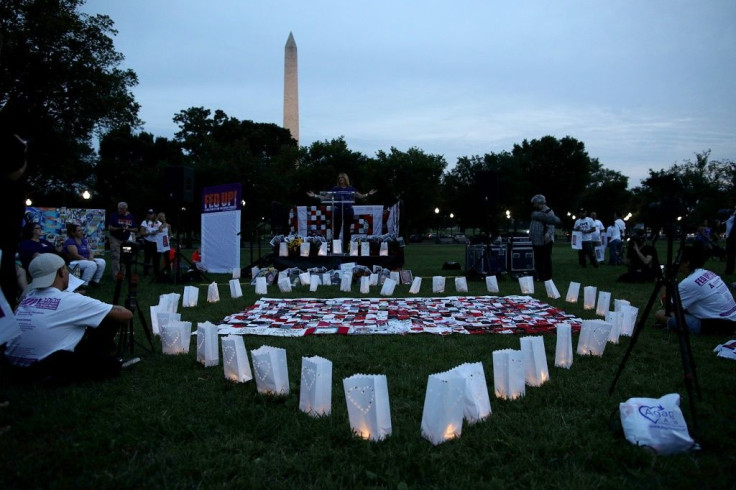To Reduce Needless Deaths, Look at Faces, Not Numbers

In Cleveland, emergency room physicians are constant witness to the loss or maiming of young life, for reasons most would consider preventable. The weekend of June 22, 2020, for example, 6 people were shot. At the end of July, 6 shootings and 4 stabbings occurred in a 24 hour-span. On Aug. 8, another 3. Two days later, two more.
One physician, a nephrologist by certification, who has seen these young people die is Ashwini Sehgal. He has medically tended to the needs of at least a dozen shooting victims and more than 2 dozen overdose victims during his career at MetroHealth Medical Center.
But Dr. Sehgal is also Co-Director of the Center for Reducing Health Disparities at Case Western University in Cleveland. He has been disturbed with how the media discusses statistical deaths from firearms, drug overdoses and motor vehicle accidents, as it doesn’t match what he sees in front of him. He said he sees young people cut down in their prime. In studies, he reads discussions about statistics.
“Like most people, I have trouble grasping the impact of both the large absolute numbers of deaths and the small annual death rates. I decided to look at these tragedies in a different way,” he said in an interview with Medical Daily.
Dr. Sehgal has written opinion and journal articles in which he discusses how correcting the language used to describe these issues is vital. It’s important not only to squash misinformation, but to educate people, because of their demographic and other factors, how likely they are of falling victim to an overdose, firearm fatality, or motor vehicle accident.
Easier Ways to Share Important Numbers
Study numbers are often communicated through annual reports, the emotion stripped away from thousands of heartbreaking cases. Articles will lead with large numbers such as the 40,000 firearm deaths from last year, or with death rates, such as 20 overdose deaths per year per 100,000 people.
Instead of looking backwards at thousands of accumulated events, Dr. Sehgal, in a study yet to be peer-reviewed, looked forward, using a model of 100,000 individuals and real outcomes -- any cause of death or death by a firearm. The model was divided into five-year groups. Once these values were obtained for each group, the same process was used for drug overdoses and motor vehicle deaths. Then the race, ethnicity and gender breakdowns for each state ensued. Overall, people in this country in 2018 had a .93% chance of dying by a gunshot, 1.52 of a drug overdose or .92% in a motor vehicle accident. For a Black man, the firearm risk rose to 1 out of 38 -- 2.61% lifetime risk. (Asian women, 0.08% risk.) White men had a 2.13% risk from a drug overdose. If a white man lived in West Virginia, that risk rose to 3.54%. In Mississippi, the lifetime risk of dying from a drug overdose, 1 in 59 people, was outscored by dying in a car accident, a 1 in 57 chance.
He is encouraging researchers to put a face to each statistic. In a piece in STAT News, Dr. Sehgal talked about visiting a grammar school, picturing in his mind the gravity of these ultimate occurrences. “As I walked through the school, I realized that one child on every floor of the school will likely die from a gunshot and another will die from a drug overdose in the years ahead,” Dr. Sehgal wrote. The breakdown here: 1 out of every 100 child will die from a gunshot and out of every 70 child will die from overdoses, if current death rates continue.
Dr. Sehgal has also used official death certificate data to calculate the odds of a child dying from a firearm or a drug overdose over the course of his or her lifetime. By looking at individual lifetimes instead of generalizing events, people can relate to these issues by seeing people instead of statistics.
Looking at numbers, translating them into faces
Risk of these tragic incidents occurring depend on a few factors, such as location, age and demographics. In a world where situations rapidly change, it is interesting to analyze these numbers and see where spikes occur. For example, Dr. Sehgal notes in many of his studies how Black men are affected more often by these issues throughout their lives, mentioning that 1 out of every 40 will die from a gunshot.
“The big differences in firearm and overdose deaths by race, gender, state, and country, and the sizable changes over time, indicate that high levels of deaths from these two sources are not inevitable,” said Dr. Sehgal.
Dr. Sehgal said policy makers and healthcare providers have an obligation to look at these numbers and make changes. He believes that policy and legislation is necessary to protect human lives that are clearly at stake.
Especially in times of social advocacy and political unrest, it is crucial for legislators to understand how these incidents ebb and flow as a result of current events. Dr. Sehgal believes elected officials have a responsibility to make changes to keep lives safe and to protect children.
He noted that lifetime risk calculations assume that future death rates would match current ones, but it does not have to be that way.
“We should take sensible steps now to help our children avoid the preventable tragedies of firearm and overdose deaths,” said Dr. Sehgal.
Lara Becker is a Medical Daily intern and a senior at The College of New Jersey studying Journalism/ Professional Writing and Communication Studies.
Published by Medicaldaily.com



























